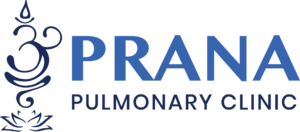5 Tips for Managing Obstructive Sleep Apnea During Pregnancy

Pregnancy is a beautiful and transformative period in a woman’s life, but it can also come with its own set of challenges. One such challenge is managing obstructive sleep apnea during pregnancy. Obstructive sleep apnea is a sleep disorder characterized by repeated pauses in breathing during sleep, often caused by the relaxation of muscles in the throat. It can lead to restless nights, and fatigue, and even pose risks to both the mother and the baby. In this article, we will explore five tips for managing obstructive sleep apnea during pregnancy, helping expectant mothers navigate this condition and ensure a healthy pregnancy.
Consult with a healthcare professional:
The first step to managing obstructive sleep apnea during pregnancy is to consult with a healthcare professional. A doctor specializing in sleep medicine or a prenatal care provider can help assess the severity of your condition and provide guidance on the best course of action. They may recommend lifestyle changes, sleep position adjustments, or even a referral to a sleep clinic for further evaluation.
Maintain a healthy lifestyle:
Maintaining a healthy lifestyle is crucial for managing obstructive sleep apnea during pregnancy. Regular exercise can help improve sleep quality and oxygenation, reducing the likelihood of sleep disturbances. Incorporating a balanced diet, rich in fruits, vegetables, and whole grains, can also contribute to overall well-being. Avoiding tobacco and alcohol altogether while pregnant, as well as reducing caffeine intake, is paramount in the pursuit of good sleep health.
Create a comfortable sleep environment:
Creating a comfortable sleep environment is essential for managing obstructive sleep apnea during pregnancy. Invest in a supportive mattress and pillows that promote proper alignment of the head and neck. Elevating the upper body with a wedge pillow or adjustable bed can help relieve sleep apnea symptoms by keeping the airways open. Utilize blackout curtains and earplugs to minimize outside disturbances and promote uninterrupted rest.
Adopt proper sleep positions:
Proper sleep positions can significantly impact sleep quality and alleviate the symptoms of obstructive sleep apnea during pregnancy. Sleeping on your side, particularly the left side, is generally recommended for pregnant women as it promotes optimal blood flow to the baby and reduces pressure on the organs. Additionally, using pregnancy pillows or wedges to support the abdomen and back can enhance comfort and reduce the likelihood of airway obstruction.
Consider the use of continuous positive airway pressure (CPAP) therapy:
For severe cases of obstructive sleep apnea during pregnancy, healthcare providers may recommend the use of continuous positive airway pressure (CPAP) therapy. CPAP involves wearing a mask that delivers pressurized air into the airways, preventing them from collapsing during sleep. Although initially, it may feel uncomfortable, CPAP can significantly improve sleep quality and reduce associated risks. Collaborating with a sleep specialist or respiratory therapist can help ensure the correct setup and adjustments for maximum effectiveness.
Conclusion
Managing obstructive sleep apnea during pregnancy is crucial for the well-being of both the mother and the baby. By consulting with healthcare professionals, maintaining a healthy lifestyle, creating a comfortable sleep environment, adopting proper sleep positions, and considering CPAP therapy when necessary, expectant mothers can effectively manage their sleep apnea symptoms. If you are struggling with obstructive sleep apnea during pregnancy, seek the guidance of professionals at Prana Pulmonary Clinic. By implementing these tips and seeking expert advice, you can ensure a restful night’s sleep and a healthy pregnancy for you and your baby.










